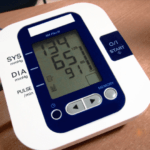Biometric authentication and verification are in use virtually everywhere in the world. You’ve probably used it at the office to clock in your day. Airports use it to ensure security stays airtight, making it difficult for people to travel with false identities.

Unlocking a smartphone usually involves biometric verification these days as well. Internet providers like Spectrum internet and search engines like Google may make use of behavioral biometric authentication to ensure your accounts aren’t being used by other people.
Examining the Pros and Cons of Biometric Security Systems
There is no doubt that the use of biometric authentication and verification is fairly widespread right now. However, there are several key questions that need to be addressed. For example, what about the safety and privacy of users who provide biometric inputs for authentication/verification?
How do businesses and governments use this biometric data? Where do businesses cross the line between security and invading privacy? Can you alter biometric data? These are all key questions, which can be understood clearly when examining the pros and cons of biometric verification technology offers. Read on to find out more.
The Advantages of Using Biometric Authentication
Biometric tech has been in use for businesses for some time now. It is also gaining use in a lot of the technology and devices we use on an everyday basis. Using biometric authentication systems holds several advantages, including the following.
Improved Security
The biggest advantage biometric systems offer is improved security and verification assurance. These systems identify and recognize real, tangible traits that a person possesses. Unlike passwords, PINs, or codes, biometric inputs offer a roadblock to security breaches.
In virtually any case, only the real authorized user can unlock a biometric security point. Unless hackers develop a way to steal and use fingerprints, hand geometry, or facial features, it will be difficult for them to get past biometric authentication.
Better User Experience
Biometric security systems often improve the overall user experience. It does so because biometric authentication is fast and convenient. Imagine the time it takes to type out a complex password. What about the time wasted on passwords with typos? What about the added time of a second security layer in terms of two-factor authentication?
Biometrics don’t have these failings. You can’t “forget” your fingerprint, and you don’t have to make multiple attempts to authenticate yourself.
Every Person Has Unique Biometric Inputs
Every human body is naturally distinct from all the others. Even identical twins have different biometric identifiers, such as unique fingerprints. This only adds to the robustness of a biometric security system.
Only authorized users can get past the security check. Nature ensures that it is virtually impossible for a person to be able to fake your biometric credentials to gain access.
Biometric Data Cannot Be Altered
Finally, it is more or less impossible to replicate and alter biometric data. People have unique biometrics, such as their irises, fingerprints, hands, and even facial markers. Biometric systems use complex systems to convert these biometrics into data sets.
These data sets are then used to match a particular user’s biometric input with the stored data. Current technology simply does not have the capacity to alter biometrics and fool the system.
The Disadvantages of Biometric Authentication Systems
We know now that biometrics offers a useful layer of security. This layer is extremely hard to breach since each person has a unique biometric input. It is also a much faster and more convenient way to gain authorized access.
It is also nearly impossible to trick your way into biometric authentication. But despite all of this, these systems still hold some disadvantages, including.
Cost Intensive Systems
The biggest drawback to a biometric security system is the cost factor. These systems are expensive and require specialized equipment. Larger businesses and governments can usually afford to deploy such systems. However, smaller businesses may find it to be too much of a stretch on their security budget.
Not Impervious to Data Breaches
Biometric systems are notoriously hard to get past. However, they still store sensitive and personal data that could potentially be valuable to cybercriminals. Biometric systems often require increased and sophisticated security measures to protect this data. Even then, the risk of a breach is never 0%.
Systems Can Track and Monitor People
Biometric information is unique to each user. Once you offer this information as an input to a biometric system, it is stored there as data. We all know businesses often sell data to third parties, which could mean this data may end up elsewhere.
There has been a lot of talk about governments such as in China or Hong Kong using facial recognition systems to police their citizens. While the decreased crime is welcome, it also poses serious questions about privacy and appropriate surveillance.
Join 25,000+ smart readers—don’t miss out!







